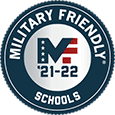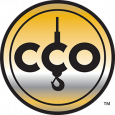Forklifts make jobs involving heavy lifting easier than ever. They can carry objects that are either extremely difficult or impossible to transport manually, which protects workers from back and other injuries.
Unfortunately, forklifts can also cause severe injuries and even fatalities when not handled properly. They can tip over, fall from elevated platforms, and collide with bystanders. That’s why heavy equipment safety training is essential for equipment longevity and worker safety. Let’s take a closer look at why forklift accidents happen and what safety rules help reduce the risk of these accidents.
Table of Contents
Why OSHA Forklift Violations Happen
Forklift accidents occur for a number of reasons. Here are some of the most common ones:
- Operator Error
Many forklift accidents occur because the operator isn’t certified or wasn’t properly trained to operate this piece of equipment. - Tipping
A forklift tips over because the balance was off, the load was heavier than the forklift, or the load was positioned incorrectly. - Driving Too Fast
Excess speed causes the forklift to turn too quickly around corners or hit an obstacle, and the operator loses control. - Pedestrian Accidents
Sometimes a pedestrian isn’t paying attention and walks in front of a forklift while it’s being operated. Other times, the forklift’s load blocks the operator’s view of a pedestrian in front of them. Bystanders can also be injured due to a load falling, a forklift tipping over, or a forklift falling off an elevated platform.
OSHA Sets the Standards for Forklift Safety
The Occupational Safety & Health Administration (OSHA) sets the forklift regulations for operators nationwide, which applies to training, licensing, and operation. These OSHA safety guidelines are designed to keep operators and bystanders safe while forklifts are in use on a job site. OSHA has a Top 10 list they send out to relevant employers to alert them of common forklift hazards they should be aware of and take steps to fix.
The Top 13 OSHA Forklift Rules and Regulations You Should Know
1. Know the Stats
Forklifts are powerful pieces of machinery that enable operators to lift and transport heavy objects. Unfortunately, they’re also the source of many workplace accidents and fatalities. According to the Bureau of Labor Statistics, 40,440 injuries resulting in time off of work were reported between 2021 and 2022. Additionally, 73 forklift-related fatalities occurred in 2022 alone. Knowing the risks of forklift operation and how to avoid them can help reduce these numbers.
2. Use Safety Guards
Forklifts must have an overhead safety guard to protect the operator from falling objects.
3. Change and Store Batteries Properly
Worksites should have a designated battery charging station for forklifts and other heavy equipment. Forklifts must be turned off to ensure a full charge, and a conveyor or overhead hoist should be used to insert and remove batteries.
4. Avoid Horseplay and Machine Misuse
Forklifts are tools, not toys. Do not use them to race, do donuts, or engage in any other kind of horseplay that could result in an injury or even a fatality.
5. Sound the Horn at Blind Intersections and Corners
Many warehouses, manufacturing facilities, and construction sites have blind corners and intersections, making it difficult for forklift operators to see what’s ahead when transporting a load. Operators should utilize the horn when traveling through these blind spots to alert those nearby of a potential hazard.
How quickly can you complete your training from HEC ?
6. Control Unsafe Gases and Fumes
Gases and fumes can become hazardous if not handled properly around a forklift. Follow relevant guidelines to handle these substances safely, protecting yourself and others from harm.
7. Operate Safely
Here are some general rules for forklift safety you should keep in mind:
- Operators must be 18 years of age or older to operate a forklift
- Operators must be recertified every three years
- Wear a seatbelt at all times
- Follow all manufacturer instructions
- Do not exceed the recommended travel speed or load limit
- Maintain a safe distance from any platforms or edges
- Maintain visibility of your work area
- Ensure proper clearance when loading, unloading, raising, and lowering
- Watch out for other vehicles and pedestrians nearby
8. Check the Truck and Trailer Wheels Before Each Use
Make sure the wheels are secure and not damaged before climbing into the cab. Loose or damaged wheels can cause the forklift to roll.
9. Don’t Raise or Lower Loads While Moving
You should only raise and lower loads when the forklift is stationary. Raising or lowering a load while the forklift is moving could cause you to lose control and the load to fall from the arms.
10. Inspect the Machine’s Condition Before Each Use
Inspect the forklift thoroughly before each use to make sure it’s in good condition to operate. Report and address any issues before using the forklift to prevent an accident.
11. Don’t Smoke in Refueling or Charging Areas
Do not smoke near the refueling or charging areas. Smoke fumes or sparks could ignite the fuel, batteries, or other flammable materials, causing a fire.
12. Establish a Visual Communication System
Forklift operators and other workers should establish a set of visual cues that communicate what actions to take and alert others of any hazards. These cues improve traffic flow, enhance project efficiency, and protect workers from getting injured.
13. Implement a Floor Marking System to Keep Workers Safe
Safety signs and floor markings are another way to minimize workplace hazards and protect workers from harm. Red floor markings, for example, indicate things like fire-related hazards, emergency switches, and hazardous machines. Yellow floor markings, on the other hand, indicate when caution should be used to avoid hazards like stumbling and falling. Floor markings should be placed at all corners and intersections where accidents are more likely to occur.
The Ultimate Wind Speed Guide for Mobile Crane Operation
Keep reading to learn more about how wind speed impacts crane operation, how to handle high winds, and when to stop operations for safety reasons.
OSHA Forklift Training Requirements
All operators must be trained to operate the specific type of forklift they will use on a job site and must be certified to operate it. They must also receive continual training every three years to get recertified. Training should include a combination of classroom instruction and hands-on practice.
Forklift Maintenance Rules
Employers and operators should follow all maintenance regulations and guidelines set by the equipment manufacturer and OSHA. This includes checking forklifts for worn and damaged components that need to be repaired or replaced. Clean any excess oil or grease from forklifts, and remove a forklift from your rotation if an inspection deems it unsafe to operate.
Employers must train operators in all relevant maintenance procedures to maintain the safety and performance of forklifts being used. Employers should also work with their employees to establish a comprehensive forklift maintenance plan.
Explore HEC
While HEC does not offer Forklift training, our heavy equipment training programs combine classroom instruction with hands-on experience to prepare people like you for life on the job. Plus, our accelerated format means you can complete training and get certified in as little as three weeks.
From teaching the fundamentals of construction operations to providing job placement assistance, HEC will be there for you every step of the way. Apply today to get one step closer to the job you want.




